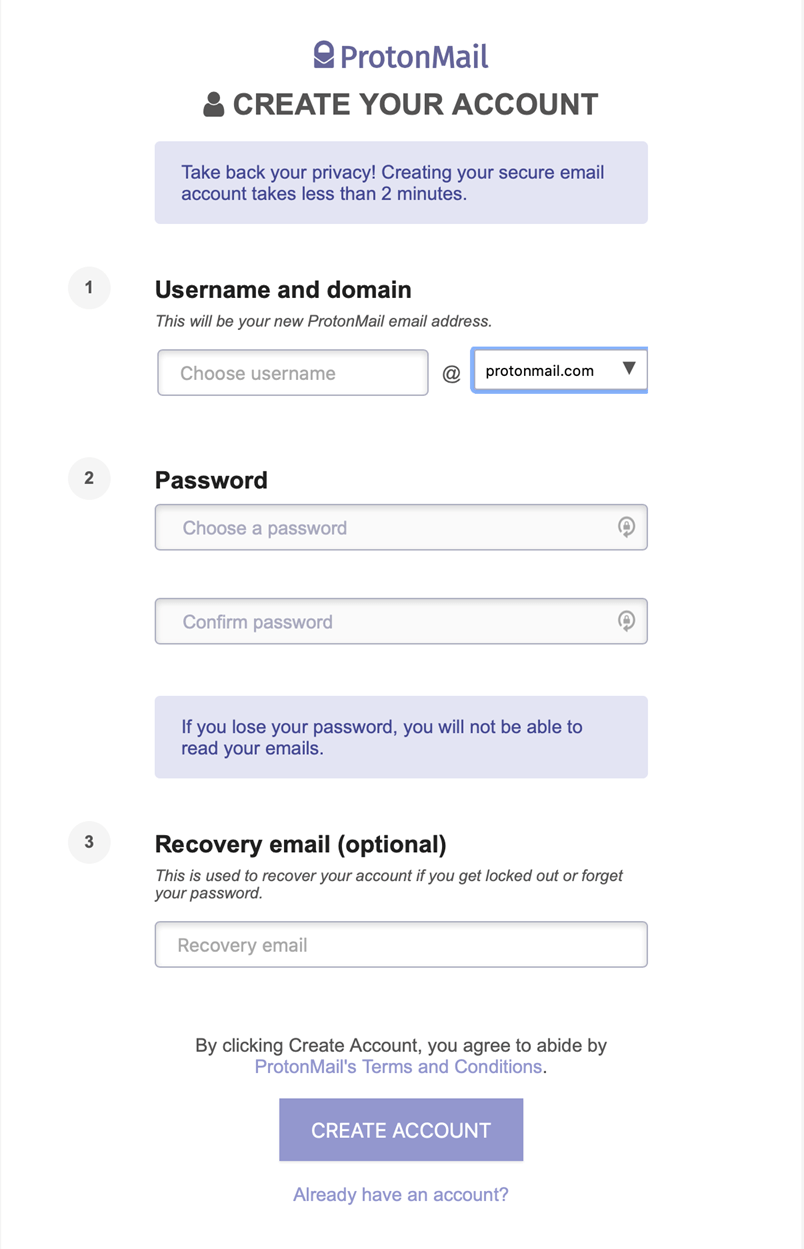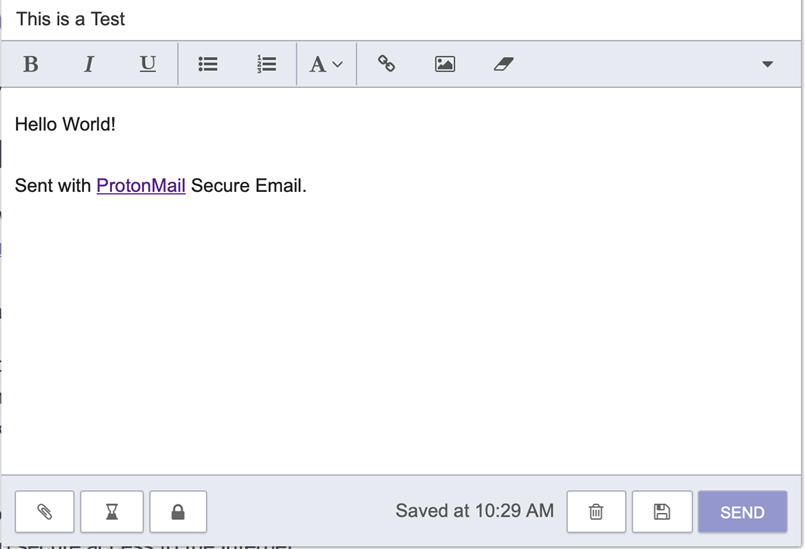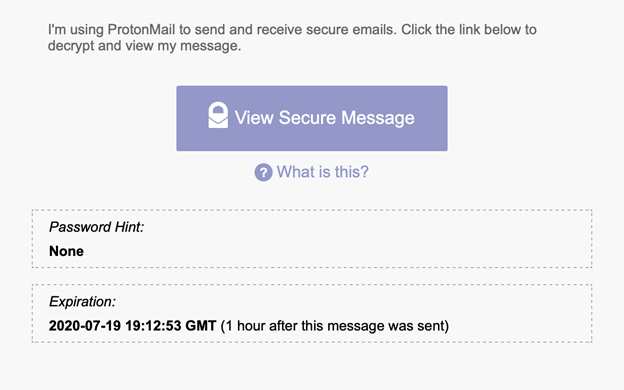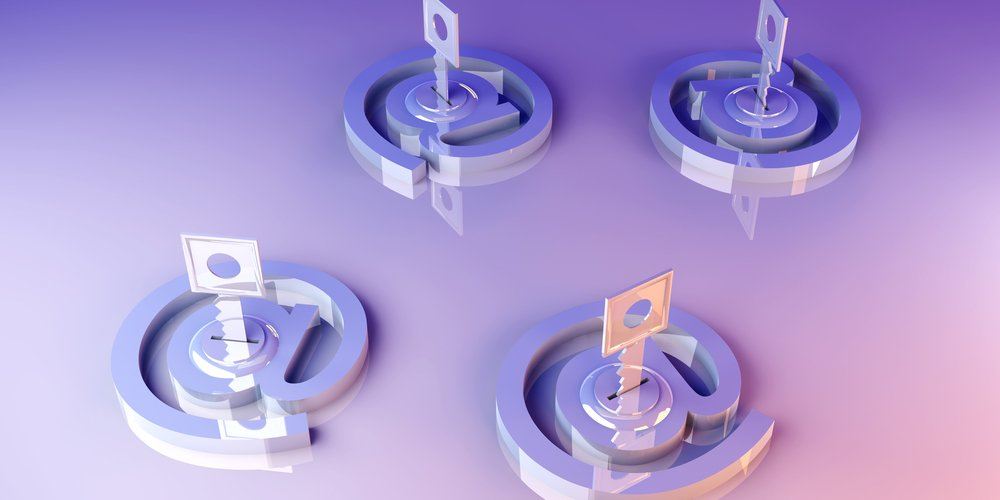Sometimes private or sensitive data is sent over email without much thought towards who may be able to access that data other than the intended recipient.
There are many ways to attack this problem. One of the most popular options is to encrypt your email communications.
You may be thinking that surely companies like Google and Yahoo have some encryption that they use when sending emails. This is true as they use many different methods to attempt to ensure that no one else could gain access to the data you are sending.
Although, there are cases where the receiving mail server does not support encryption and so the email will be sent entirely unencrypted. On top of that, you are also trusting your email provider with all of the information.
This is where a tool like ProtonMail comes in. They offer many different ways to encrypt your data and send it across the internet. This includes options to send the email encrypted with a password that ProtonMail, nor the recipient’s email provider, can read without the password.
ProtonMail has a personal and a business version, but we will be focusing on the personal options here.
Setting up Your Account
ProtonMail offers two subscription options Free and Plus, which are free and paid accounts, respectively.
With the free account, you can still use ProtonMail for encryption. However, you are limited to internal emails to other ProtonMail users. If you try to send externally, ProtonMail will attempt to use TLS. Encrypted data will be received by the email recipient only if the mail server supports TLS.
Here are the other limitations of the free account include:
- 500MB of email storage
- 150 sent emails per day
For most people that are looking for an alternative to popular email providers like Gmail or Yahoo Mail, this will probably suffice.
Where ProtonMail really starts being a compelling option is with the Plus account where you gain access to more space and more sent emails per day in addition to custom domains, encryption to external recipients, and access to email aliases.
Once you select the type of account, you will be presented with the below screen to get it setup.

Once you complete this page, you will be taken to the payment information page if you selected a paid account or to a confirmation page if you opted for the free account. Once your account is created, you will be presented with a screen to enter your preferred display name. Once set, you can click Finish to complete the setup.
Encrypting Your Email

In your inbox, just click on the Compose button in the upper left corner to start an email. With either a free or a paid account, any emails sent to others that are using ProtonMail will be encrypted end-to-end.
But if you have a paid account and is emailing an external recipient, you will have a little lock icon when you compose an email.

By clicking on the lock icon, you will be prompted to enter a password. This password will be required to decrypt the email so the recipient will also need to know the password. If you need to share the password with the recipient, a common practice would be to mail the password that would be used for further communication.
There are also services online like OneTimeSecret, where you can share a password with someone else, and it is destroyed after a single viewing. Although, if you are going to be providing the password electronically, you should use a different medium than email to provide it.
When sending an email you also have the option to click the hour glass icon to set an expiration for the message. By default, any emails sent have an expiration of 28 days, unless a shorter expiration is set.
Below is what an email looks like when an expiration is set:

When sending an email that is encrypted, the recipient will receive an emails like below:

This will show the password hint if you set one. Meanwhile, the expiration of the message with a link to ProtonMail’s website to receive the unencrypted message, which looks like this:

Here you also get an active countdown until the expiration of the message and an option to reply securely. This does not require an account with ProtonMail and can be used until the link expires.
Conclusion
While encrypting your email communication is great in theory, it does add some additional inconvenience to the recipient, which can drive people away from using it. In addition to the increase in phishing attempts via email, some people may assume the email is malicious unless they are expecting it ahead of time. Even with it being an uphill battle to use an encrypted email service, ProtonMail makes it about as easy as it can be.
Further Reading
Here you can read more about the specifics about ProtonMail’s encryption, and here you can read ProtonMail’s guide on how to migrate from other popular email services.
